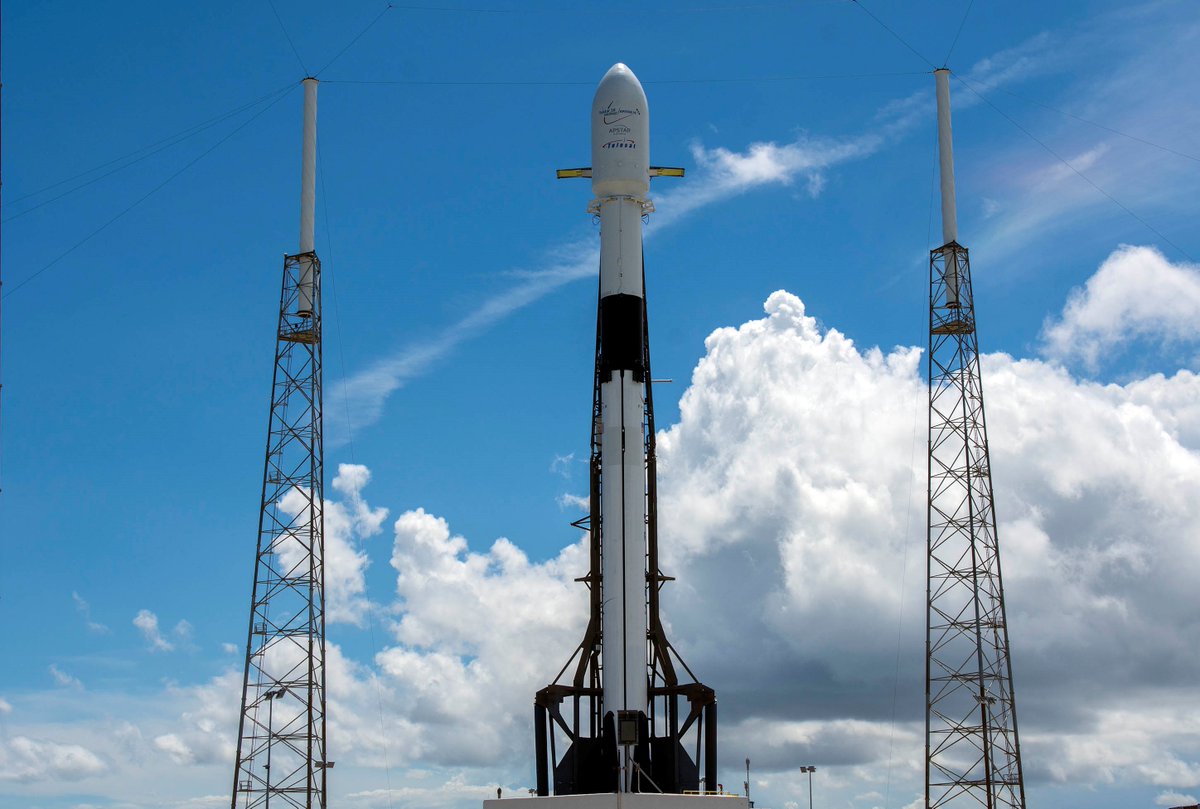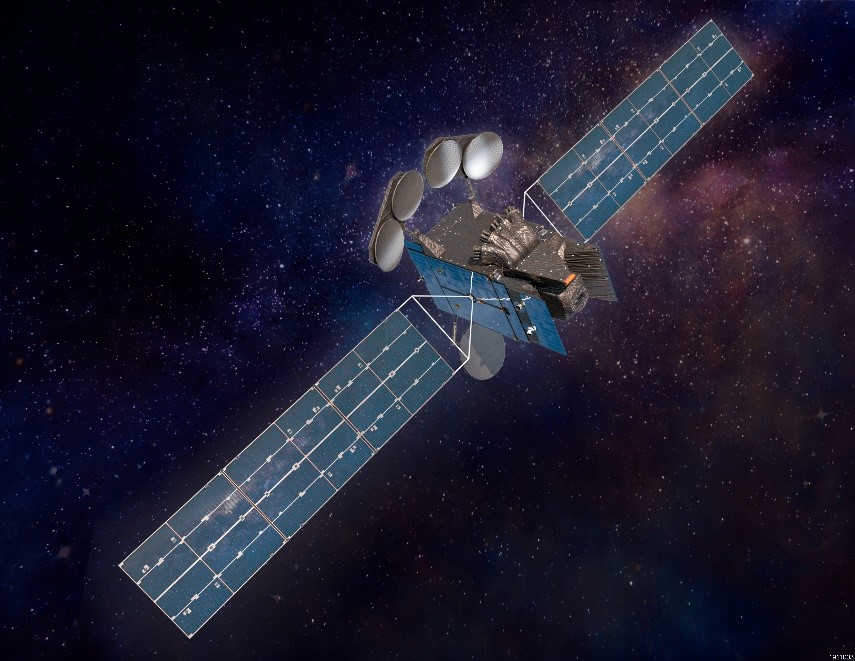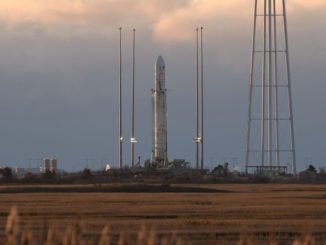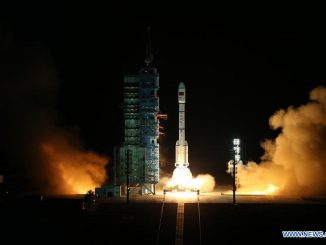
A SpaceX Falcon 9 rocket will launch an Intelsat communications satellite with a NASA-funded air pollution monitor to be positioned over the Americas in 2022, officials announced Tuesday.
The Falcon 9 will take off from a launch pad at Cape Canaveral with the Intelsat 40e, or IS-40e, communications satellite, Intelsat announced Tuesday. The Intelsat 40e spacecraft will be built by Maxar Technologies in Palo Alto, California, on the 1300-series satellite platform under a manufacturing contract announced Feb. 3.
Intelsat 40e will be the second Intelsat payload to launch on a Falcon 9 rocket, following the Intelsat 35e satellite, which launched in July 2017.
“We look forward to working with SpaceX to launch Intelsat 40e in 2022,” said Mike DeMarco, Intelsat’s chief services officer. “IS-40e will join the Intelsat Epic high-throughput satellite fleet and integrated IntelsatOne ground network to provide our customers with the managed hybrid-connectivity they need in today’s ever-changing world.”
Financial details of Intelsat’s contract with SpaceX were not disclosed.
“We are honored Intelsat, one of the world’s premier satellite operators, has selected a flight-proven Falcon 9 to deliver its next geostationary communications satellite to orbit,” said Tom Ochinero, SpaceX’s vice president of commercial sales.
Intelsat 40e will launch into an elliptical, or egg-shaped, geostationary transfer orbit, then use its own propulsion to reach a circular orbit more than 22,000 miles (nearly 36,000 kilometers) over the equator. The spacecraft will provide high-throughput communications services over North and Central America, including links to airplanes and other vehicles on-the-move.
A NASA science instrument will be mounted to the Intelsat 40e satellite to monitor air pollution over North America.

The TEMPO instrument on Intelsat 40e will gather atmospheric chemistry measurement over North America. The data will be collected hourly during daytime by TEMPO, revolutionizing air quality forecast and allowing scientists and policymakers to evaluate emission control strategies, according to NASA.
TEMPO stands for Tropospheric Emissions: Monitoring of Pollution. The instrument features an ultraviolet and visible spectrometer, and was built by Ball Aerospace and Technologies Corp. in Boulder, Colorado.
“TEMPO exploits 30 years of our development of ultraviolet and visible atmospheric spectroscopy to make air quality measurements at revolutionary spectral and spatial scales,” said Kelly Chance, the sensor’s principal investigator from the Smithsonian Astrophysical Observatory in Cambridge, Massachusetts.
Construction of the TEMPO instrument was completed at Ball Aerospace in 2018. NASA partnered with the U.S. Space Force’s Space and Missile Systems Center to use a military contract vehicle to select a company to integrate TEMPO with a commercial satellite designed to operate in geostationary orbit.
Government officials picked Maxar, which identified Intelsat 40e as the host satellite for the TEMPO instrument.
Email the author.
Follow Stephen Clark on Twitter: @StephenClark1.



